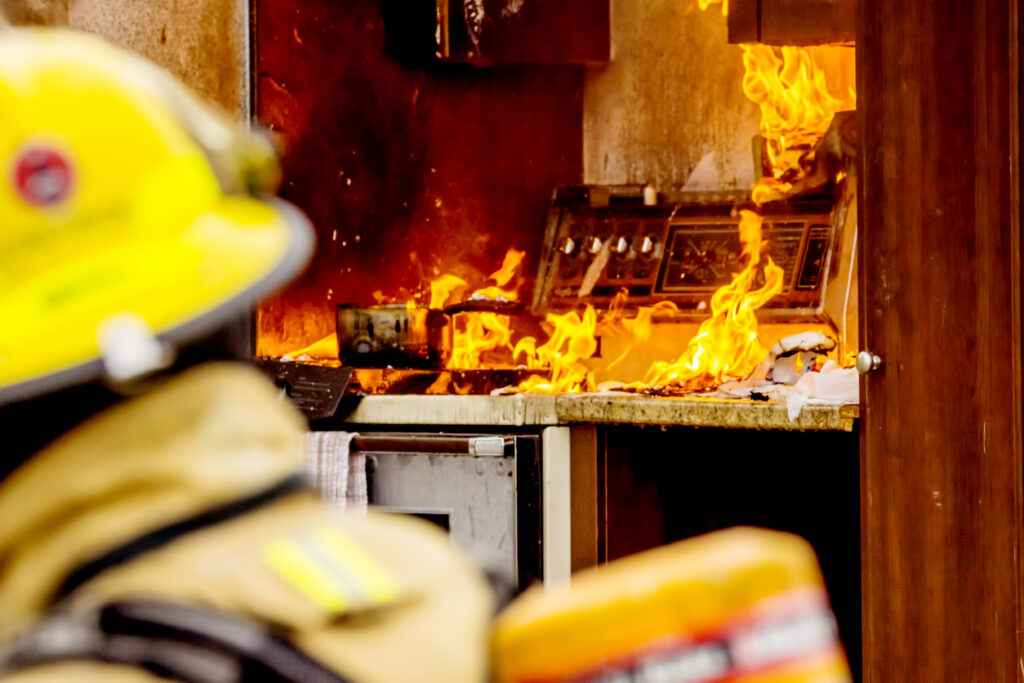Community risk reduction, otherwise known as CRR, is a way in which fire and emergency medical services (EMS) organizations create mitigation, prevention and educational programs that are in line with a community’s risks. Organizations such as Vision 20/20 and the United States Fire Administration’s National Fire Academy have data models on which first responder departments can base their community risk reduction programs.
Each state’s fire marshals will also develop their own data models. But how can you be sure that your EMS organization has implemented the best possible changes in its community risk reduction programs to prevent deaths or injuries?
Kitchen Fires and Other Data to Consider in an EMS Community Risk Reduction Program
Data is a driving force of a community risk reduction model. Much of the data is quantitative, but some of it is qualitative.
The first data points to consider are the current location of fires and the causes of fires in your area. After that, it’s necessary to analyze the locations where EMS calls occur and what factors cause the most 911 calls.
In my organization, we plotted our fires on a Geographic Information Systems (GIS) map and found where there were clusters of fires. We also captured common National Fire Incident Reporting System codes for these fires and determined the common themes of the fires’ causes through personal narratives. After analysis, we determined that kitchen fires in multi-family dwellings were the prevalent cause of fires in our community.

From the EMS side, this type of data analysis is more complex. Many EMS organizations have nursing homes, elderly care facilities or drug/alcohol rehabilitation facilities in their jurisdictions. These facilities have their own unique factors that may or may not be related to an assessment for the purpose of community risk reduction.
For example, the lack of private ambulances and the shortage of nursing staff in nursing homes often causes their staff to use local EMS personnel to transport patients from the facility to a hospital. That use of EMS limits the burden on the nursing home staff and allows them to comply with a doctor’s order to have the patient evaluated for non-emergent issues.
RELATED: Professional Development: A Solution to EMS Agencies’ Problems
How Much Data Is Needed and Where to Collect It
In my community, we had a rash of fires that have resulted in deaths. But upon preliminary investigation, these fires did not fit the prevailing pattern of cooking fires common in our community. In such a situation, it’s necessary to ask, “Are these fires anomalies or should I find another dataset that could refine the scope of this analysis?”
At first, I felt these fires were just anomalies. But after the state fire marshal’s representative said that statewide findings were in line with our fatal fires, I felt that we may have missed a vital dataset at the state level.
And if that data from the state was helpful, there could be more data available at the national level that could further influence our EMS community risk reduction program. But it’s necessary to consider whether additional datasets will improve community risk reduction or just reflect what the National Fire Protection Association (NFPA) provides for fire prevention and education.
Which Data Deviations Are Acceptable?
While no data model will be 100% accurate, it’s necessary to consider what constitutes acceptable deviation from the model’s predictions. Using data analysis to drive fire mitigation and prevention efforts is one of the best ideas the fire service has developed. Trying to blanket all areas of your community with generic fire messages does not work, and no organization has the manpower for this type of educational program.
However, how much deviation from the data model should exist prior to its re-evaluation and how do we find flaws in the model? Should more weight be given to all fires or the fires that result in deaths? Should fires in multi-family and high-rise buildings have more weight in the data model, since these structures house a greater number of people? These questions should certainly be considered during the creation of a data model for community risk reduction.
Having a Data Model Is the Best Approach for EMS Community Risk Reduction
Having a model to analyze fire and EMS data and creating a community risk reduction program are important to successfully mitigate fires and EMS calls in a community. Using data to analyze where emergencies commonly occur and the causes of those emergencies provides important knowledge and can pinpoint where more resources and educational programs are needed.

Comments are closed.